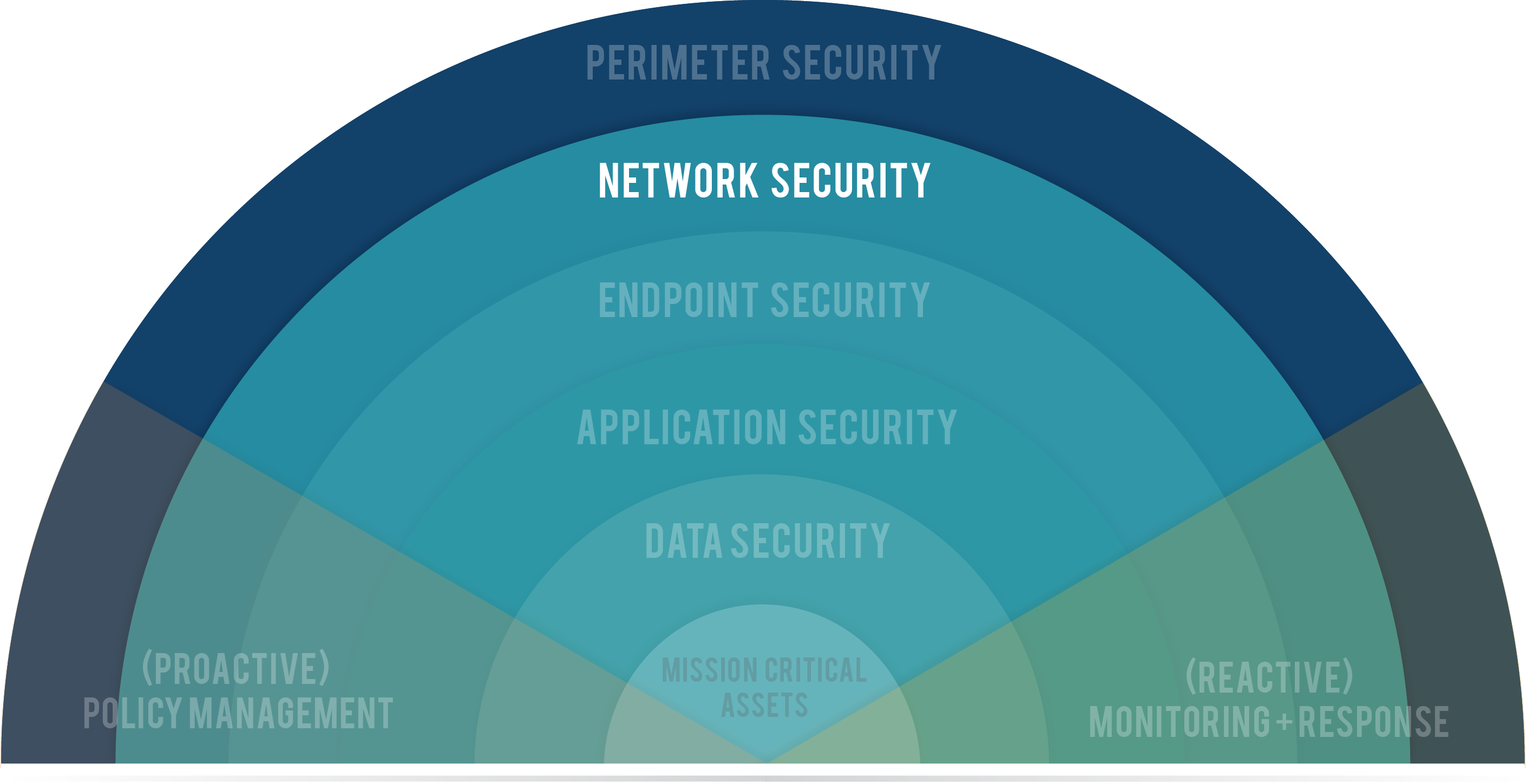How Fiber Network Security Solutions Ensure Maximum Protection for Your Communications
How Fiber Network Security Solutions Ensure Maximum Protection for Your Communications
Blog Article
The Essential Role of Data and Network Safety And Security in Safeguarding Your Info
In an age where information violations and cyber hazards are increasingly prevalent, the significance of robust data and network security can not be overemphasized. Organizations has to not just protect sensitive information but also ensure compliance with developing governing criteria. The execution of reliable protection actions, such as encryption and accessibility controls, is critical to maintaining trust fund and functional stability. Nonetheless, the landscape of cyber threats is frequently changing, questioning about the adequacy of existing methods and what new techniques may be required to stay in advance of prospective risks. What exists in advance in this complex security setting?
Understanding Information Security
In today's digital landscape, an overwhelming bulk of organizations face the complexities of information security. This important component of details technology includes protecting sensitive information from unauthorized gain access to, corruption, or burglary throughout its lifecycle. Data protection includes numerous strategies and innovations, consisting of encryption, gain access to controls, and information masking, all targeted at protecting details against breaches and susceptabilities.
A basic aspect of data safety is the recognition and classification of data based on its sensitivity and value. This category helps organizations prioritize their safety initiatives, alloting resources to safeguard the most essential information efficiently. Moreover, applying durable plans and treatments is necessary to ensure that employees comprehend their role in preserving data safety.
Routine audits and evaluations aid in determining potential weaknesses within an organization's information security framework. Additionally, staff member training is essential, as human mistake stays a considerable consider data violations. By cultivating a society of safety understanding, organizations can mitigate threats related to insider risks and negligence.
Importance of Network Protection
Network safety stands as a foundation of an organization's total cybersecurity method, with roughly 90% of businesses experiencing some kind of cyber danger in the last few years. The importance of network safety hinges on its capacity to secure sensitive details and preserve the integrity of service operations. By guarding network facilities, organizations can stop unauthorized accessibility, data violations, and other harmful activities that might jeopardize their possessions and reputation.
Applying robust network protection measures not just helps in mitigating dangers yet likewise cultivates count on amongst clients and stakeholders. When consumers are assured that their individual and economic details is protected, they are extra likely to engage with the company, causing enhanced consumer commitment and service development.
Furthermore, a well-structured network safety structure helps with conformity with various regulative needs. Organizations must abide by market criteria and lawful mandates concerning information security, and efficient network protection practices can guarantee compliance, consequently staying clear of possible penalties.

Typical Cyber Threats
Organizations have to stay vigilant versus a variety of cyber dangers that can undermine their network protection efforts. Amongst the most typical threats is malware, which includes viruses, worms, and ransomware that can interrupt procedures, steal information, or hold information hostage. Phishing attacks, where harmful stars impersonate relied on entities to deceive individuals right into get more revealing sensitive details, remain to grow in refinement, making user education and learning crucial.
One more widespread threat is distributed denial-of-service (DDoS) strikes, which overload systems with traffic, making them inaccessible to legitimate customers. Insider risks, whether unexpected or willful, posture significant dangers as workers might accidentally expose sensitive data or deliberately manipulate their accessibility for malicious purposes.
Additionally, vulnerabilities in software application and equipment can be manipulated by cybercriminals, highlighting the relevance of regular updates and spot management. Social engineering strategies even more complicate the landscape, as opponents adjust people right into disclosing personal details via psychological manipulation.
As these dangers progress, companies need to preserve an aggressive technique to determine, alleviate, and react successfully to the ever-changing cyber danger landscape, safeguarding their valuable information and keeping trust fund with stakeholders. fft pipeline protection.
Ideal Practices for Security
Carrying out robust safety and security measures is vital for guarding delicate information and keeping functional stability. Organizations ought to begin by performing detailed danger assessments to recognize susceptabilities within their systems. This proactive approach enables the i thought about this prioritization of safety campaigns customized to the certain needs of the organization.
Adopting solid password policies is essential; passwords need to be complicated, frequently changed, and handled using safe and secure password administration tools. Multi-factor verification (MFA) adds an additional layer of security by calling for additional verification approaches, thus lowering the danger of unapproved access.
Normal software updates and spot management are vital to protect against recognized susceptabilities. Executing firewall programs and intrusion detection systems can better shield networks from outside dangers. Worker training is just as important; personnel needs to be informed on identifying phishing attempts and comprehending the relevance of data safety methods.
Data encryption ought to be used for delicate details, both at remainder and in transportation, to ensure that even if information is obstructed, it continues to be inaccessible (fft pipeline protection). Finally, organizations must develop and frequently test occurrence reaction prepares to guarantee quick action in case of a safety and security breach. By adhering to these ideal methods, organizations can boost their security stance and shield their important data assets
Future Trends in Security
The landscape of information and network safety is constantly evolving, driven by innovations in modern technology and the enhancing sophistication of cyber hazards. As companies increasingly take on cloud computing and IoT devices, a knockout post the standard of safety and security will certainly move toward a zero-trust design. This approach stresses that no entity-- exterior or interior-- is naturally trusted, mandating confirmation at every gain access to factor.
Moreover, using expert system and artificial intelligence in protection methods is on the surge. These technologies make it possible for predictive analytics, enabling companies to identify susceptabilities and potential dangers prior to they can be exploited. Automation will likely play a crucial role in simplifying safety and security feedbacks, reducing the moment required to mitigate breaches.
In addition, regulatory frameworks will proceed to tighten up, necessitating a lot more rigid conformity steps. Organizations needs to remain abreast of evolving policies to guarantee they fulfill security standards.

Conclusion
In verdict, the significance of data and network safety can not be overemphasized in the modern digital landscape. With the prevalence of cyber dangers and the raising intricacy of regulatory requirements, companies have to adopt comprehensive safety and security procedures to shield delicate details.
In an era where data breaches and cyber threats are increasingly prevalent, the significance of robust data and network safety and security can not be overstated. Data safety and security includes various strategies and technologies, including encryption, access controls, and data masking, all intended at guarding details versus violations and vulnerabilities.
An essential aspect of information protection is the recognition and classification of data based on its sensitivity and importance.The landscape of information and network protection is consistently progressing, driven by improvements in innovation and the enhancing sophistication of cyber hazards.In verdict, the relevance of information and network safety and security can not be overemphasized in the contemporary electronic landscape.
Report this page